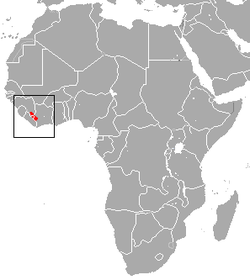| Aellen's roundleaf bat | |
|---|---|
| Scientific classification | |
| Kingdom: | Animalia |
| Phylum: | Chordata |
| Class: | Mammalia |
| Order: | Chiroptera |
| Family: | Hipposideridae |
| Genus: | Macronycteris |
| Species: | H. marisae |
| Binomial name | |
| Hipposideros marisae Aellen, 1954 | |
 | |
| Aellen's Roundleaf Bat range | |
Aellen's roundleaf bat (Hipposideros marisae) is a species of bat in the family Hipposideridae. It is found in Ivory Coast, Guinea, and Liberia. Its natural habitats are subtropical and tropical forests and caves. [1]
